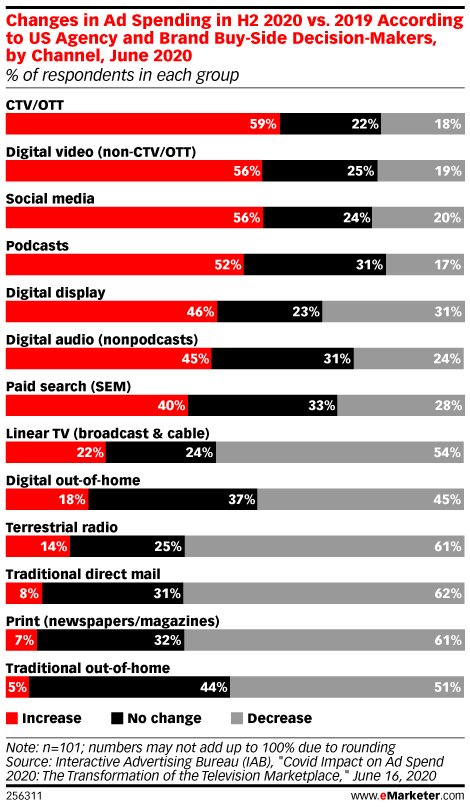In a previous blog, we looked at the difference between digital and traditional media from a functional standpoint. Today I want to look at the difference between them from in terms of ad spend. Below is an updated ad spend report that is showing where most advertisers are spending their money, channel by channel within digital versus traditional media.

This report was put out by e-marketer and it’s showing 2020 vs. 2019 where ad agency and in-house big brands, like the Walmart’s of the world, are spending their ad dollars. This data was collected and produced in June of 2020, so in the middle of the coronavirus pandemic, which is still extremely relevant because we’re still sort of in the middle of this whole mess.
The red is showing where they are expanding their ad dollars, the black is showing unchanged amounts, and the gray is showing decreases.
The Migration to Digital
Pay attention to the channel groupings. The top nine is all digital media and the bottom four are all traditional. If you look at almost every digital category, the ad spend is increasing, as opposed to almost every traditional channel – TV, billboards, radio, direct mail, print, etc. – which is decreasing in a huge way.
This is extremely important to understand. In the top spot is CTV, which is connected TV. This is video streaming services like YouTube and Hulu. It is now number one and that was not the case three years ago. Neither were podcasts – this is all new.
This is showing how consumers are shifting their attention.
They’re no longer sitting in front of the TV watching cable or the local news. They’re still consuming video, but the way they’re consuming it is different. They’re now logging into YouTube, Hulu, and Netflix to get informed, educated, and entertained. Podcasts are also new and growing. More and more people are listening to them over the radio while driving around. This shift is very real. It is not a fad.
Digital is continuing to grow and furthermore, it’s continuing to divide.
